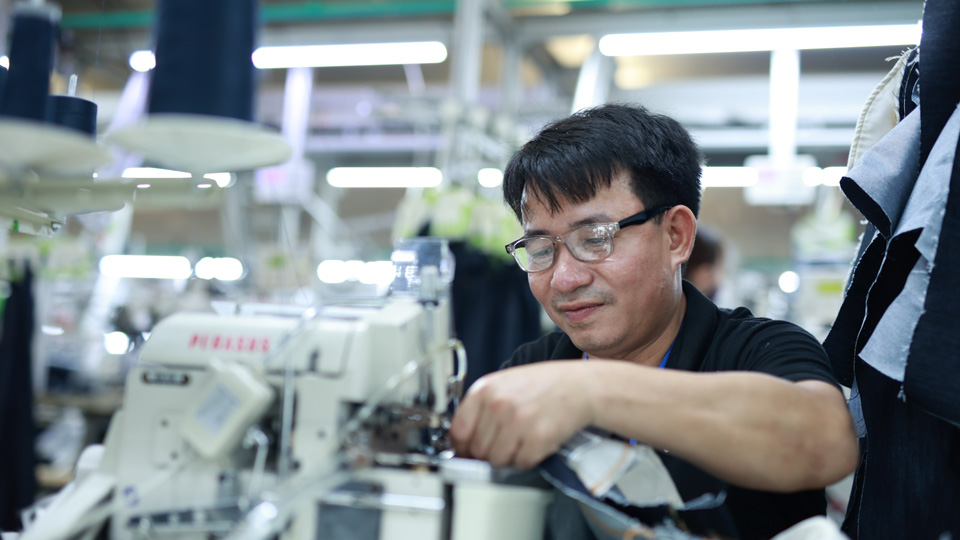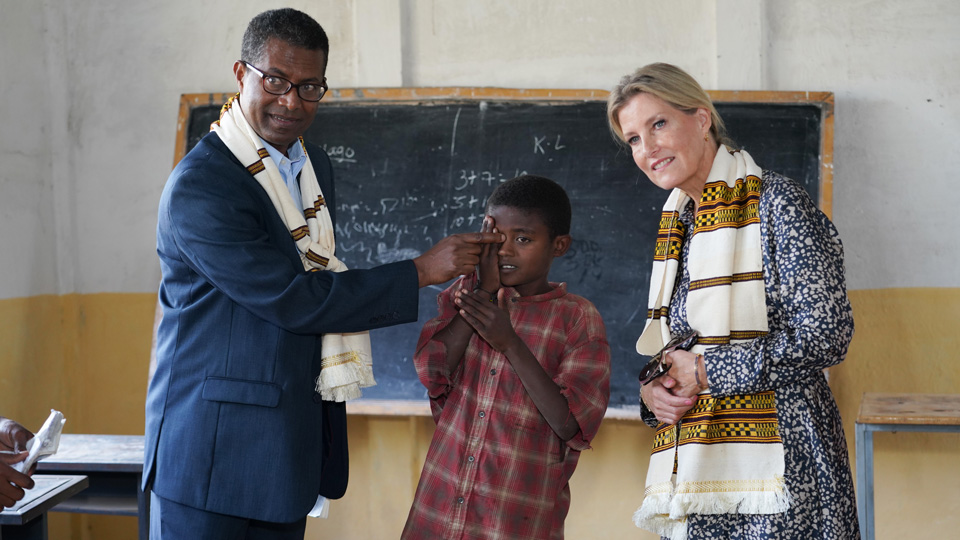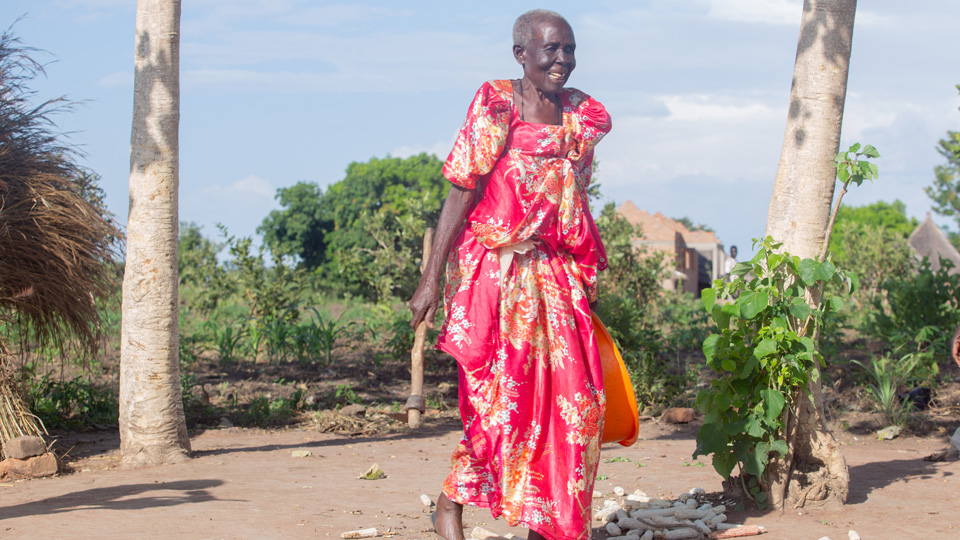World Sight Day 2023: reinforcing the importance of eye health in the workplace
OT rounds up activities from organisations recognising World Sight Day 2023

12 October 2023
The Love Your Eyes at Work campaign aims to encourage employers to do more to protect the eye health of workers.
Peter Holland, CEO of IAPB, said: “We know that eye health has a profound impact on the wellbeing, productivity, and safety of employees, and this World Sight Day, we are committed to reinforcing the importance of eye health in the workplace.”
The campaign is a reminder, he suggested, “of the vital role our eyes can play in helping us reach our full potential at work and beyond.”
The IAPB has received more than 13 million pledges from individuals and organisations committing to a sight test, more than double the figure reached last year.
As part of the World Sight Day activities, IAPB member organisations spanning 100 countries have been encouraged to host sight screenings.
“In a world where, for many, equitable access to eye care remains a distant reality, pledging to ‘Love Your Eyes’ and hosting workplace vision screenings act as a powerful form of advocacy,” Holland said.
Pocket-sized eye health education
Two new apps aiming to provide education and support around eye health have been launched to coincide with World Sight Day.
Aston University and Ulster University have collaborated on the development of a new app to support clinicians managing myopia.
Free for clinicians, the Predicting Myopia Onset and Progression Risk Indicator (PreMO) app is designed to help track the development of myopia and progression of treatments, as well as facilitate communication and education with the patient and their parents or guardians.
Read more about the app on OT.
The World Health Organization (WHO) has also launched a new public health app: WHOEyes.
The app guides users through a series of prompts to check visual acuity and then provides educational messages on how individuals can protect their eyes. The WHO emphasised that the app does not replace a regular appointment with an eye care professional.
Stuart Keel, technical officer, vision and eye care programme, said: “The app, much like the Love Your Eyes campaign, promotes proactive eye care which is a vital step towards addressing the huge unmet vision needs on a global scale.”
Eye care for all
The new president of the World Council of Optometry, Dr Sandra S Block, has released a statement for World Sight Day.Block took up the role at the end of September.
In her address, Block acknowledged that glasses are the most common intervention to address “the enormous magnitude of preventable vision impairment due to uncorrected refractive error.”
“Yet the reality is that simply correcting a person for myopia, hyperopia, astigmatism, or presbyopia is only one step in addressing good vision and eye health,” she wrote, highlighting the many visual conditions that, if untreated, can lead to irreversible vision loss.
“The World Council of Optometry strongly recommends that adults have a full eye exam to ensure that there are no underlying vision or eye health problems that may need additional care such as cataracts, glaucoma, diabetic retinopathy,” Block shared. “The eyes are often referred to as the windows to the body meaning that some ocular changes are indicators for many systemic diseases that can be detected during a thorough eye exam.”
“World Sight Day is a great time to highlight the importance of talking to your patients, the members of your community, family, and friends about the value of obtaining an eye exam,” she added.
Highlighting the value that is placed on vision, and the fear many people having of losing sight, Block commented: “Let’s take the preventative approach together. A quick visit to the optometrist can be a way to stay healthy with good vision.”
“I recently visited my personal optometrist, Dr Jennifer Harthan, received good news, and reordered my contact lenses which I am picking up from her office,” Block added. “Please do not forget eye care providers need to get checked too.”
Please do not forget eye care providers need to get checked too
Specsavers highlights screen time
Specsavers has released new research which suggests UK hybrid office workers spend an average of 12 hours a day on screens.
This World Sight Day, the company is reminding employees of their entitlement to eye care through employers and highlighting the effects of screen time on eyes.
In a survey of 2000 hybrid workers, Specsavers found that of the average 12 hours people spend on screens, nearly five hours are spent in front of laptops, while four and a half are spent on mobile phones, and three are spent watching TV.
For more than six in 10 respondents (63%) the first thing they do in the mornings is check their work emails, with 15% saying they “rarely or never” take a break from screens.
The survey found that 83% of respondents admitted to scrolling on their phones before kissing their partner good morning, and 65% look at their phone before they’ve stretched.
Specsavers found that 57% of those polled were not aware that employees who use screens for work are entitled to free eye care vouchers or tests through their employer, and more than three quarters (77%) of the hybrid workers surveyed hadn’t yet accessed these.
The survey revealed that 29% of respondents have enlarged the font size on their mobile so they can read it clearly, while 49% zoom in on images to see them better. Another 28% admitted squinting at the screen to bring details into focus. Specsavers found that eight in 10 (88%) experienced tired eyes or headaches, potentially as a result of prolonged screen time, and the majority of respondents (86%) expressed awareness and concern about the negative impact of screens on their eyesight.
A Specsavers survey of 2000 hybrid office workers found...
- 12 hours a day, on average, is spent on screens
- 83% of respondents start scrolling before kissing their partner good morning
- 86% of those surveyed were aware and concerned about potential negative impacts of screens on their eyesight.
Supporting workers in apparel supply chains
The social enterprise, VisionSpring, has screened the vision of half a million factory workers as part of the Clear Vision Workplace alliance.
The alliance works to improve the wellbeing of workers in apparel and footwear supply chains, and brings together businesses including Levi Strauss, the VF Corporation (behind The NorthFace, Vans, and Timberland), Warby Parker and Deckers Brands (behind UGG and HOKA), with USAID, VisionSpring and more than 150 manufacturers.
VisionSpring reported that it has dispensed glasses to 188,000 factory workers. The organisation noted that for 78% of recipients it was their first pair.

Ella Gudwin, CEO of VisionSpring, commented: “Serving half a million workers demonstrates that this life-changing intervention scales.”
188,000
glasses dispensed by VisionSpring to factory workers
The screenings in Bangladesh, India and Vietnam revealed that one in three workers producing the world’s apparel and footwear is struggling with blurry vision, VisionSpring noted.
Each of the US businesses involved in the programme work with factories in their supply chain to arrange and pay for screenings, with spectacles funded by Warby Parker.
The alliance has agreed a target to screen an additional 500,000 workers in the next two years.
Villa Vision in numbers
The initiative provides education on eye health, as well as vision screenings, and eye tests for those requiring them, to communities in Birmingham.
Learn more about the impact of the project, which launched in 2020, on OT soon.
The path to eliminating blinding trachoma
Eye care charity, Orbis, has welcomed Her Royal Highness the Duchess of Edinburgh on a visit of services to protect the vision of children and adults in Hawassa, Ethiopia.
The Duchess of Edinburgh, global ambassador for the IAPB, met with health workers screening for and treating blinding trachoma at a primary eye care unit.
Orbis highlighted the range of challenges people face that can lead to trachoma, highlighting that 70% of cases in Ethiopia impact women, who make up 70% or more of those receiving surgery for the advanced stage of the condition through the charity’s programmes.

The Duchess of Edinburgh visited a local school to observe how teachers screen children for eye conditions, and learn about school eye care clubs that share information to help children protect themselves from trachoma.
The visit then continued to Hawassa Tertiary Eye Care Unit, where Orbis has established simulation training opportunities with the use of virtual reality and prosthetics.
The Duchess of Edinburgh delivered a keynote speech at a trachoma elimination conference in Addis Ababa, Ethiopia, organised by Orbis, the Ethiopian Ministry of Health, and the British Embassy.
In the keynote speech, the Duchess highlighted the impact of trachoma on women, children, livelihoods, and education, and recognised the collaborative work of government and organisations.
"So much has been achieved both here in Ethiopia and around the world. But now is the time that we must all redouble our efforts if we are to achieve our aim of eliminating trachoma by the year 2030, which is a mere six years away,” the Duchess commented. “We must not let ourselves become defocused or complacent. We are on the cusp of achieving something almost unimaginable in previous years.”
We are on the cusp of achieving something almost unimaginable in previous years
Sightsavers calls for action
The international development organisation, Sightsavers, is calling on global leaders to end geographical inequity of eye health services, and emphasising that inclusive eye health is essential to achieving Sustainable Development Goals.
Sightsavers highlighted that the availability of eye health services and spectacles varies across and within countries, while many regions have low numbers of ophthalmologists.
The organisation cited research finding that women account for more than half of blindness and visual impairment across the world, and that people with disabilities are three times less likely to get the healthcare they need than those without disabilities.
Sumrana Yasmin, deputy technical director: eye health and URE at Sightsavers, commented: “Eye health should be equally available to everyone, no one should be disadvantaged because of where they live, their gender, health or background. But currently it is inaccessible for some sectors of society and even a luxury for those in urban areas.”
“When we tackle these issues, children can learn and adults can earn,” Yasmin added. “Eye health equals a ripple effect on the lives of individuals, families and communities, helping nations to thrive and reducing poverty and inequality.”
Yasmin emphasised that more needs to be done to ensure eye health is present in health planning, resourcing and funding.
The organisation shared the experience of Apolot from the Karamoja Region in Uganda, who, as a result of cataract found herself unable to fetch water, cook, or dress herself.
Through a Sightsavers’ inclusive eye health project, funded by the UK Government through UK Aid Match, Apolot received surgery and hopes to find work.

#EyeCreation
Sightsavers is encouraging the public to get creative to recognise World Sight Day.
The charity is asking individuals to create an eye shape out of any materials, snap a photograph, and share the image on social media using the hashtag #EyeCreation and tagging Sightsavers.
Examples included an eye made from fruit, and another made from books.
In the picture
The United Nations headquarters in New York has hosted a photography exhibition in recognition of World Sight Day.
The 2030 in Sight exhibition, supported by WHO, UN Friends of Vision group, and organised by IAPB presents images illustrating the effects of avoidable sight loss.
Each image in the exhibition focuses on a different Sustainable Development Goal relating to eye health, but with several of the images blurred to mirror how they would be experienced by people with eye conditions such as untreated cataract, glaucoma, or myopia.
The display runs from 9–20 October and aims to illustrate to ambassadors and diplomats that “accessible, available and affordable eye health is essential to the achievement of the SDGs.”
The exhibition also aims to reignite a call on the UN Secretary General to appoint a Special Envoy on Vision.
The images from the exhibition can be viewed through the IAPB website.
Is your practice or team recognising World Sight Day? Tag OT on social media and let us know how you are raising awareness of the importance of sight and eye health at work.


Comments (0)
You must be logged in to join the discussion. Log in